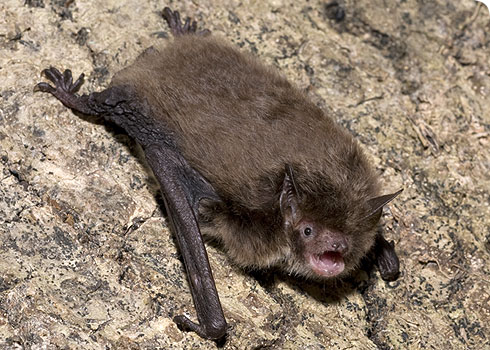Distribution
Daubenton’s bat is fairly widespread up to northern Scotland, in Ireland and on the Isle of Man.
Habitat
In England and Wales, the majority of summer colonies are in humid, underground sites near water.
These include:
- tunnels or bridges over canals and rivers
- caves, mines and cellars
- occasionally, stone buildings such as moated castles and old waterworks - more commonly used in Scotland
- rarely, tree-holes and earthen roadside banks
Summer colonies can be noisy during the day, especially at sites where they are close to human activity.
A variety of temporary night roosts are used, often in trees or tunnels close to feeding sites.
Daubenton’s bats have been found clustering with other bats, including:
- pipistrelle
- noctule
- Natterer’s
- brown long-eared bats
Daubenton’s bats hibernate in caves, mines and other underground sites - in extensive tunnel systems with large numbers of bats present.
They enter these winter sites in October, but only small numbers are present at first. Numbers increase dramatically in January and February, and individuals can remain at the site until the end of March, mostly favouring the warmer, more stable areas of the site.
Although usually solitary, small groups of 3–4 bats can be observed. Individuals are often lodged in tight crevices and are often barely visible.
They may also hide among rocks and scree on the floor of caves and tunnels making them difficult to spot.
